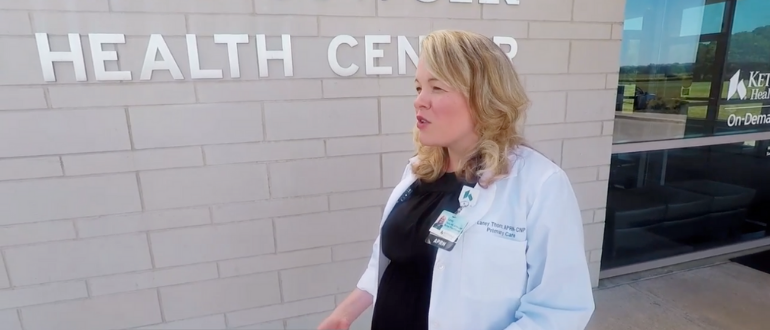Primary Care
Want to learn more about this at Kettering Health?
As the warm weather draws more people outdoors, springtime hikes present more opportunities to enjoy nature. But this also elevates potential exposure to poisonous plants.
“In the springtime, people spend more time outside, making contact with poison ivy, oak, or sumac more likely,” says Laney Thorn, a family nurse practitioner.
These poisonous plants produce an oil called urushiol that most people are allergic to, leading to an itchy skin rash.
Spot the difference
Though the allergic reaction they produce is similar, these plants are different. And knowing the distinctions among them may help you spot and avoid them—and the discomfort they cause.
Poison ivy
Most known for having three leaflets, poison ivy grows as a shrub and a vine. Also, its leaves change color every season: red in the spring, green in the summer, and orange or red in the fall. The shrub may have white berries.
Poison oak
Like poison ivy, poison oak leaves have three leaflets, but they’re fuzzy, lighter in color on the bottom than the top, and have rounded tips. Poison oak typically grows as a shrub—sometimes with white or yellow berries—and it’s most common in the western United States.
Poison sumac
Commonly growing as a tall shrub or small tree with drooping clusters of green berries, poison sumac has leaves with clusters of 7 to 13 smooth leaflets arranged in pairs. This plant thrives in wet, swampy regions.
What to do if you’re exposed
Anti-itch creams, antihistamines, colloidal oatmeal baths, and cold compresses are all recommended for those who have come in contact with a poisonous plant.
However, if you experience any of these symptoms, you should see a medical provider for care:
- Rash covering more than a quarter of your body
- Rash on the mucous membranes of eyes, nose, mouth, or genitals
- Red streaks, fever, or other signs of infection
- Signs of anaphylaxis, including difficulty breathing, hives, and swelling
“We’re here to help you feel better, and there are multiple things we can do to help alleviate symptoms,” Laney says.
“At our On-Demand Care locations, we can provide creams, other medications, or even corticosteroid injections if necessary, depending on the severity of your reaction.”











